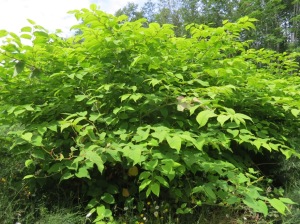Ants can be a real pain in the garden – they can build colonies around the roots of your plants, they love to farm aphids on your plants, and they can be just a big nuisance. Just a few ants won’t be too bad, but if you’re dealing with giant ant hills, you might want to get them under control.
There are a number of remedies that are supposed to work to get rid of, kill, or deter ants. These are just a few ideas, but there are other tactics, and remedies you could use. Remember though, we do not use chemicals in the garden. So find a natural remedy you like, and go for it!
Ants do not like the following things: cinnamon, vinegar, cayenne pepper or other hot peppers, baking soda (highly poisonous to ants), and mint. So, given this information, you can come up with interesting ways to either kill or repel ants.
To repel them, sprinkle cinnamon, or cayenne pepper, or plant or place mint leaves around where you see the ants. To kill them, you could also sprinkle baking soda in infested areas. Ants also love to eat dry cornmeal or cream of wheat, but doing so will result in their stomachs expanding and ultimately their death. Sprinkle it along with your baking soda, and before long, you should be on your way to keeping your ant population under control.




